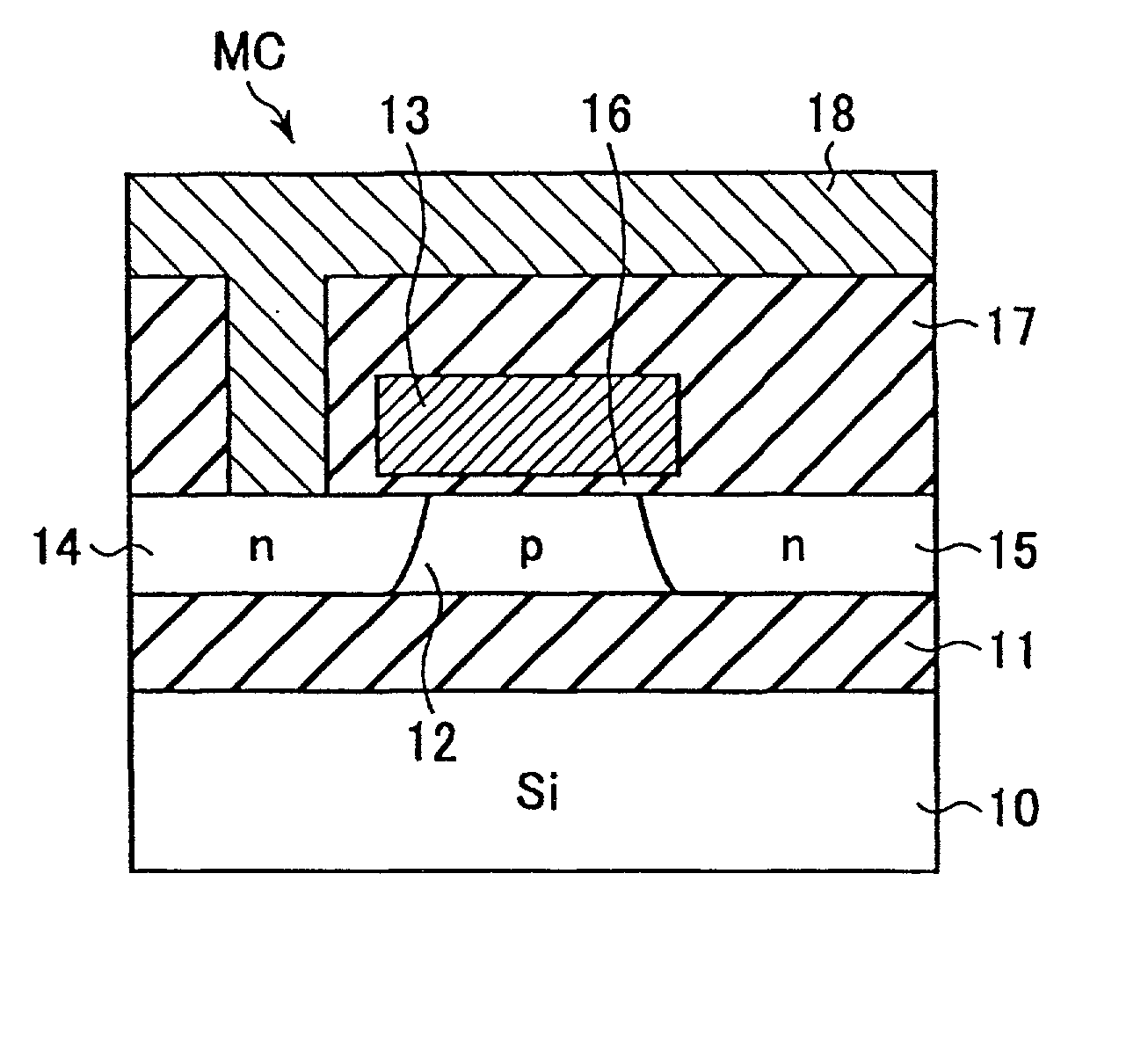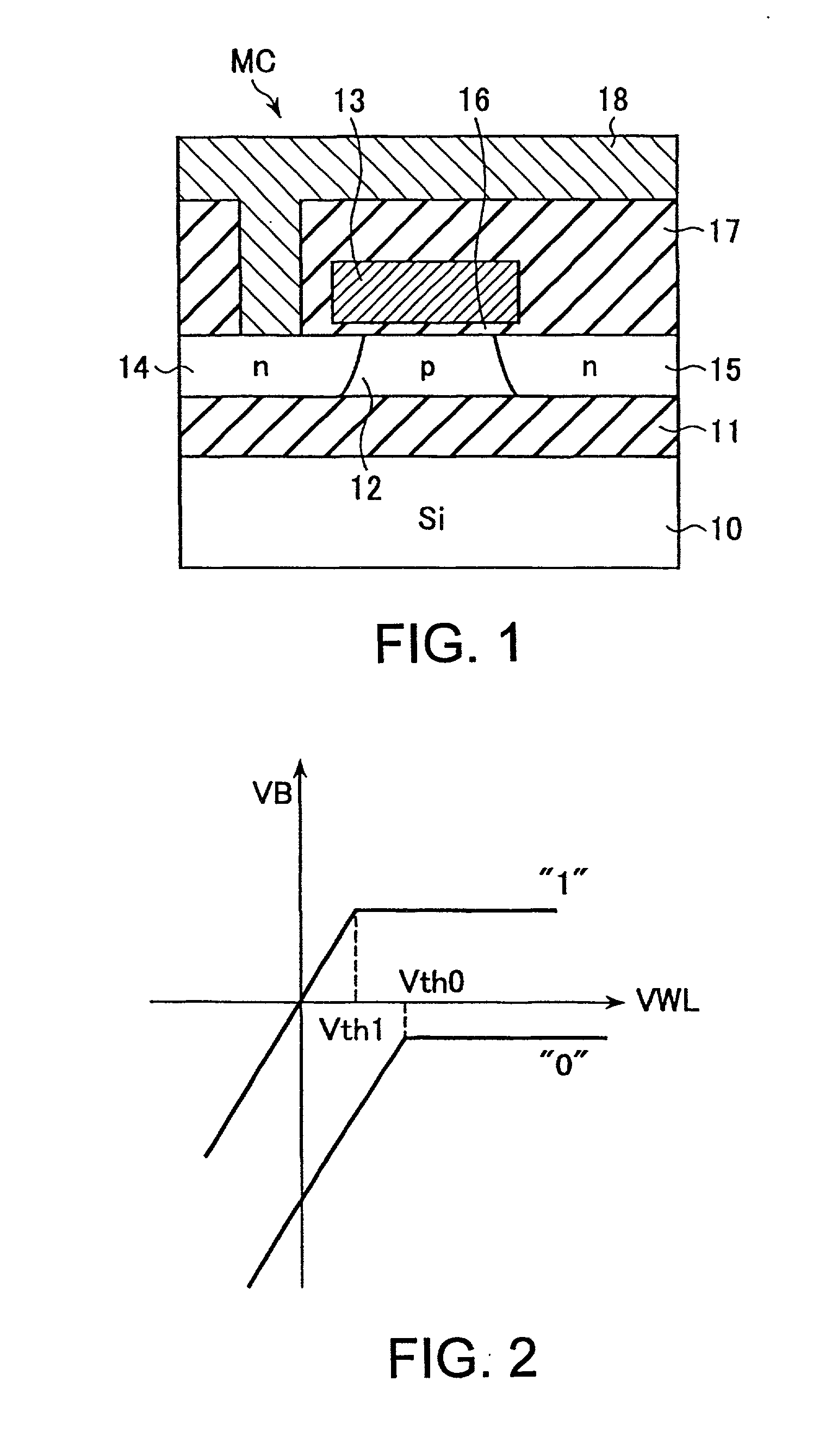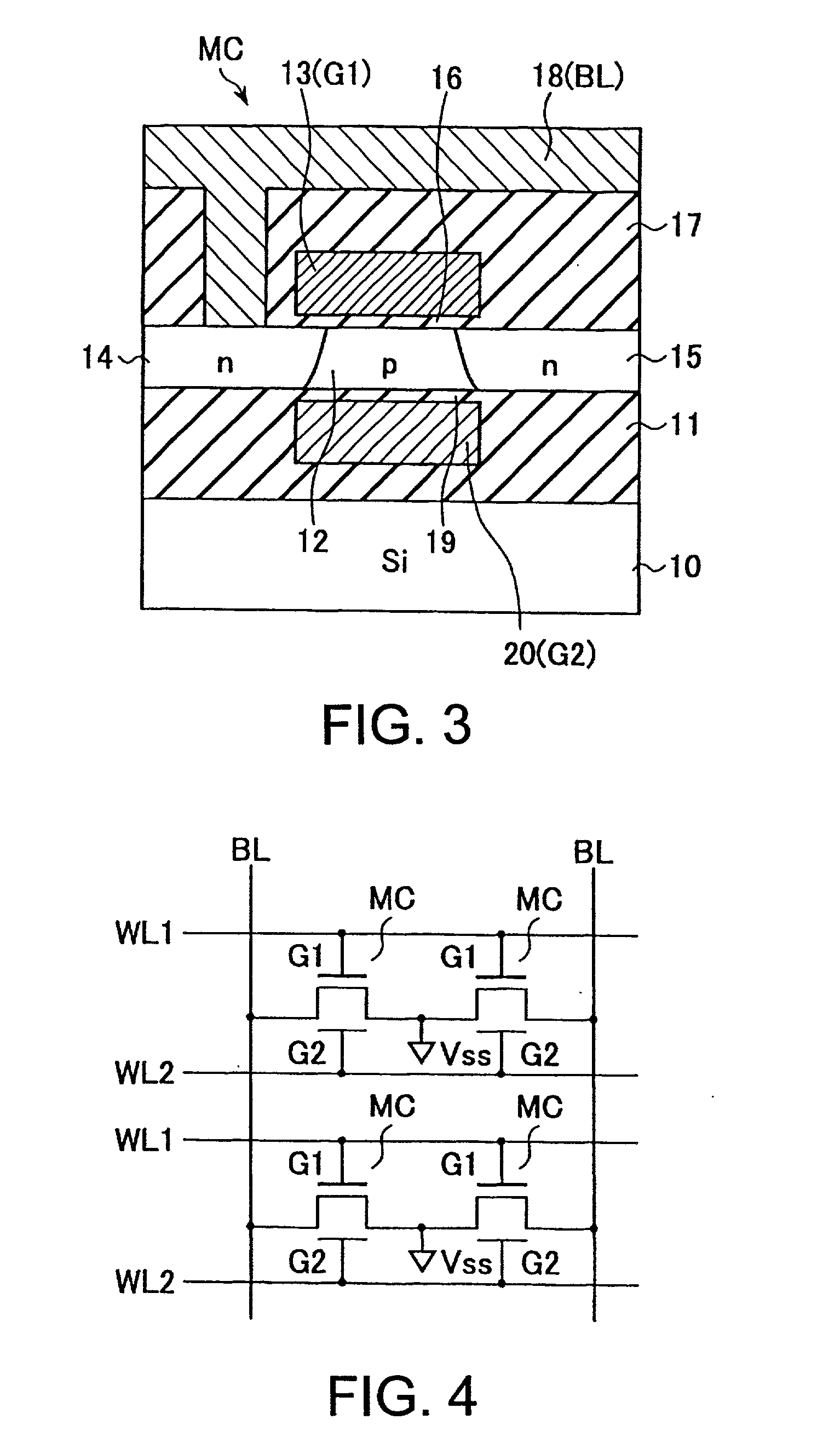Semiconductor memory device and method of manufacturing the same
- Summary
- Abstract
- Description
- Claims
- Application Information
AI Technical Summary
Problems solved by technology
Method used
Image
Examples
fifth embodiment
[0299] FIG. 11 shows the sectional structure of a DRAM cell according to a fifth embodiment. In this embodiment, a vertical MIS transistor is formed in a p-type pillar silicon portion 30 formed on the silicon substrate 10 instead of the SOI substrate. Specifically, the n-type drain region 14 is formed on the top of the pillar silicon portion 30 and the n-type source region 15 is formed at the bottom thereof. Moreover, the first gate (G1) 13 and the second gate (G2) 20 are formed to face each other on both side faces of the pillar silicon portion 30. Hence, the memory cell MC is composed of the vertical MIS transistor with the pillar silicon portion 30 as a floating channel body, instead of the SOI substrate.
[0300] This vertical MIS transistor structure is known as an SGT (Surrounding Gate Transistor).
[0301] Also by this embodiment, the same effect as that of the preceding embodiment can be obtained.
[0302] Next, manufacturing processes corresponding to the aforementioned respective e...
first embodiment
Manufacturing Process Corresponding to First Embodiment
[0303] FIG. 12 to FIG. 18 show the process of manufacturing a DRAM cell corresponding to the first embodiment shown in FIG. 3. In this embodiment, two silicon substrates are used in order that two gates 13 and 20 are disposed above and below the silicon layer. As shown in FIG. 12, in a first silicon substrate 101, trenches 102 are worked each as an alignment mark at the outside of a cell array region. As shown in FIG. 13, an oxide film 103 is buried in each of the trenches 102. The depth of the trench 102 is more than the thickness of an SOI layer which is adjusted by shaving the silicon substrate 101 later. More specifically, as will be described later, since the silicon substrate 101 becomes the silicon layer 12 in FIG. 3, the trenches 102 are formed more deeper than the thickness of the silicon layer 12.
[0304] Thereafter, as shown in FIG. 14, the second gates 20 (G2) are pattern-formed on the silicon substrate 101 with the ga...
second embodiment
Manufacturing Process Corresponding to Second Embodiment
[0307] FIG. 19 to FIG. 26 show the process of manufacturing a DRAM cell corresponding to the second embodiment shown in FIG. 8. Also in this embodiment, two silicon substrates are used in order that two gates 13 and 20 are disposed above and below the silicon layer. As shown in FIG. 19, in the first silicon substrate 101, the trenches 102 are worked each as an alignment mark at the outside of a cell array region. As shown in FIG. 20, the oxide film 103 is buried in each of the trenches 102. The depth of the trench 102 is more than the thickness of an SOI layer which is adjusted by shaving the silicon substrate 101 later. More specifically, as will be described later, since the silicon substrate 101 becomes the silicon layer 12 in FIG. 8, the trenches 102 are formed more deeper than the thickness of the silicon layer 12.
[0308] Thereafter, as shown in FIG. 21, the first gates 13 (G1) are pattern-formed on the silicon substrate 10...
PUM
 Login to View More
Login to View More Abstract
Description
Claims
Application Information
 Login to View More
Login to View More - R&D
- Intellectual Property
- Life Sciences
- Materials
- Tech Scout
- Unparalleled Data Quality
- Higher Quality Content
- 60% Fewer Hallucinations
Browse by: Latest US Patents, China's latest patents, Technical Efficacy Thesaurus, Application Domain, Technology Topic, Popular Technical Reports.
© 2025 PatSnap. All rights reserved.Legal|Privacy policy|Modern Slavery Act Transparency Statement|Sitemap|About US| Contact US: help@patsnap.com



